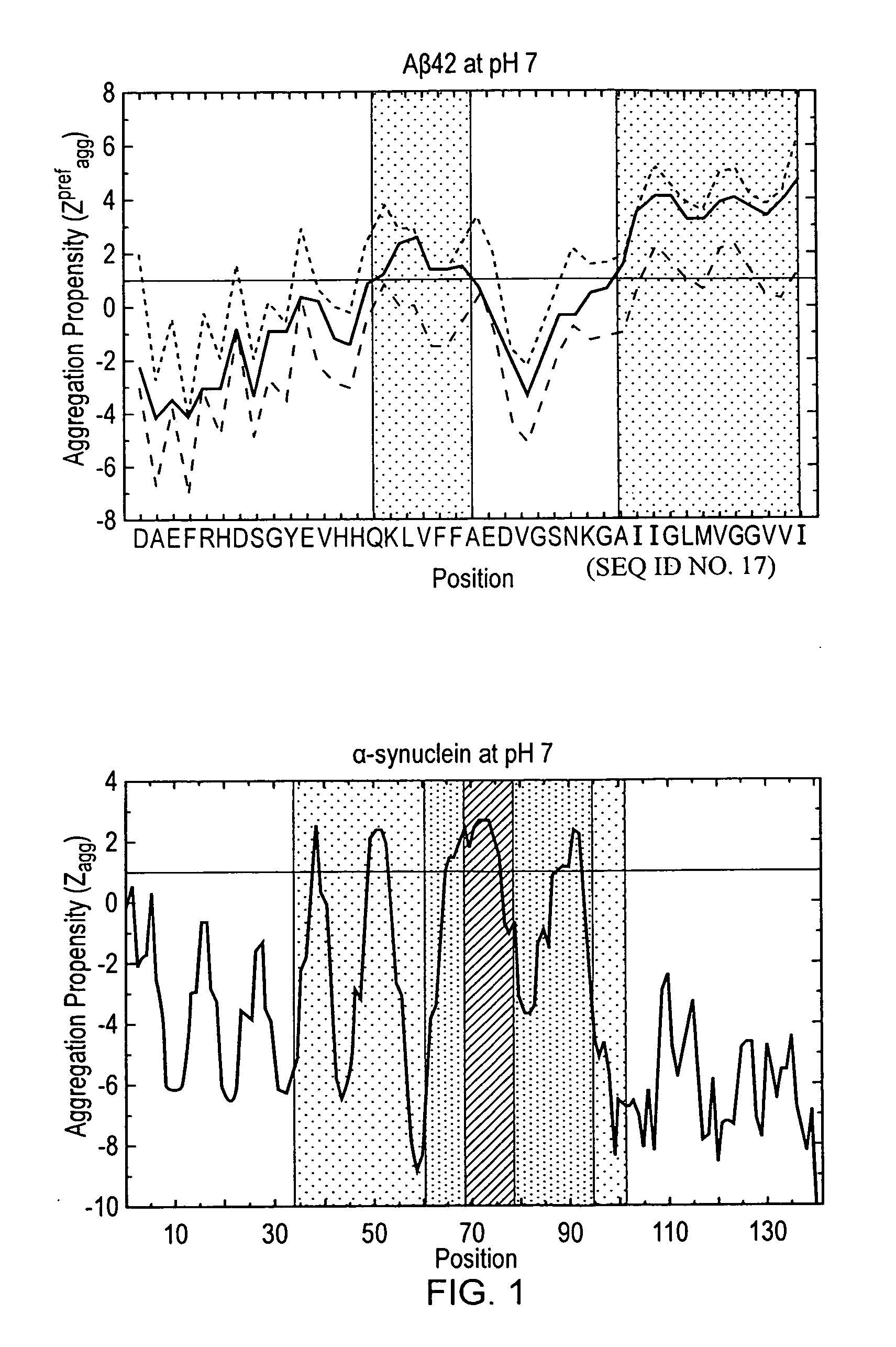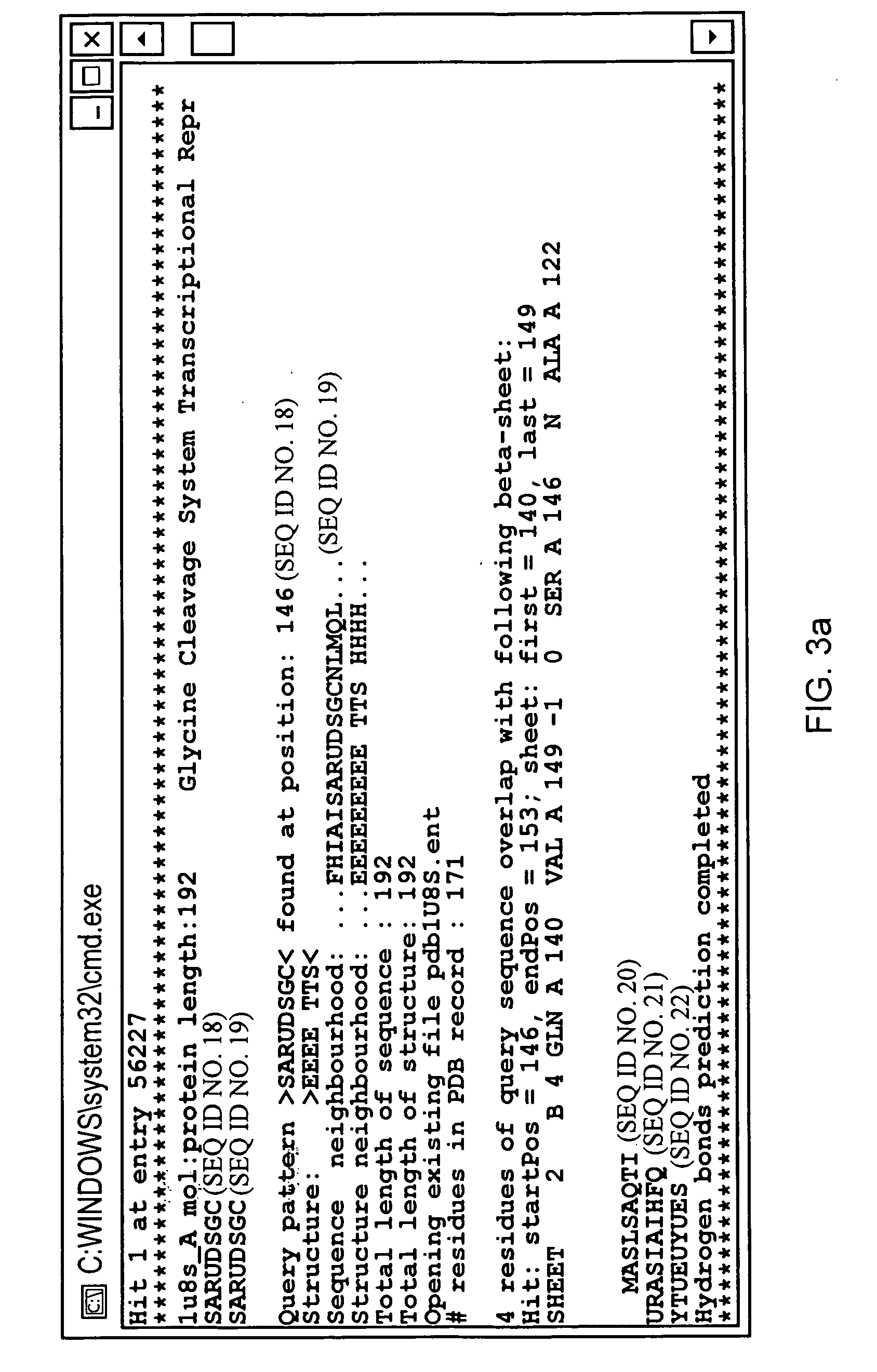Method for predicting protein aggregation and designing aggregation inhibitors
a protein aggregation and protein technology, applied in the field of protein aggregation prediction and designing aggregation inhibitors, can solve the problems of affecting the lives of those affected and their families, affecting the quality of cell quality control, and affecting so as to reduce the immunogenicity of proteins, increase the yield of proteins, and increase the shelf life of such proteins
- Summary
- Abstract
- Description
- Claims
- Application Information
AI Technical Summary
Benefits of technology
Problems solved by technology
Method used
Image
Examples
Embodiment Construction
[0064]Embodiments of the present invention will be described below. The methodology of the present embodiment will be demonstrated on a mutant of γ-crystallin D (mutCRYD). For the purposes of illustration, two further proteins are also discussed: α-synuclein, which is involved in Parkinson's disease, and Aβ42, which is associated with Alzheimer's disease.
[0065]mutCRYD is abundant in lens cells of the human eye. When misfolding, it can form aggregates that show up as cataracts leading to blurred vision or blindness (Héon E, Priston M, Schorderet D F, Billingsley G D, Girard P O, Lubsen N, Munier F L (1999) The γ-Crystallins and Human Cataracts: A Puzzle Made Clearer, Am. J. Hum. Genet. 65: 1261-1267, and Dahm R (2004) Dying to see, Sci. Am., 291(4): 52-59). γ-crystallin D and the mutant differ by three residues, R58H, R36S, and R14C, which were found to increase aggregation (Pande A, Pande J, Asherie N, Lomakin A, Ogun O, King J, Benedek G B (2001) Crystal cataracts: Human genetic ca...
PUM
| Property | Measurement | Unit |
|---|---|---|
| pH | aaaaa | aaaaa |
| distance | aaaaa | aaaaa |
| Euclidean distances | aaaaa | aaaaa |
Abstract
Description
Claims
Application Information
 Login to View More
Login to View More - R&D
- Intellectual Property
- Life Sciences
- Materials
- Tech Scout
- Unparalleled Data Quality
- Higher Quality Content
- 60% Fewer Hallucinations
Browse by: Latest US Patents, China's latest patents, Technical Efficacy Thesaurus, Application Domain, Technology Topic, Popular Technical Reports.
© 2025 PatSnap. All rights reserved.Legal|Privacy policy|Modern Slavery Act Transparency Statement|Sitemap|About US| Contact US: help@patsnap.com



